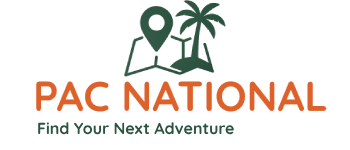Implementing Business Travel Safety Tips in Your Corporate Policy
Is your company’s travel policy truly protecting your employees? In today’s world, ensuring employee safety during business travel is paramount. This article provides expert guidance on creating a robust travel safety policy, covering everything from pre-trip risk assessments and emergency procedures to leveraging technology and crisis communication. Discover how a strong travel policy not only protects your employees but also minimizes legal and financial risks for your organization. Read on to learn how to build a comprehensive travel safety program and empower your employees to travel safely and confidently.
Important information

- A robust travel safety policy should include pre-trip risk assessments, emergency procedures, and clear communication protocols.
- Companies have a legal and moral duty of care to protect traveling employees by mitigating risks through assessments, training, and emergency contacts.
- Travel managers play a key role in ensuring safe travel by implementing policies, conducting training, and providing resources like tracking apps.
- Technology like mobile apps and travel management systems enhances safety by providing real-time information, improving communication, and enabling location tracking.
- Regular policy audits, updates, and employee training are essential for maintaining policy effectiveness and compliance with best practices.
Understanding the Importance of Business Travel Safety Tips
Employee well-being during business travel is crucial for organizational success. A strong travel safety policy demonstrates care and minimizes potential legal and financial risks from unforeseen incidents. This policy should include pre-trip risk assessments, emergency procedures, and clear communication protocols, empowering employees to handle challenges effectively. A well-defined policy cultivates a safety-conscious culture, boosting employee confidence and productivity on the go. Regular training and policy updates are vital for preparedness. Prioritizing travel safety protects employees and enhances the company's reputation. A robust travel safety policy covers the following key areas:
Pre-Trip Risk Assessment
evaluate the destination's safety profile, considering factors like political stability, crime rates, and health risks,
provide location-specific safety briefings and resources to employees,
establish clear procedures for obtaining necessary travel documents and visas.
Emergency Procedures
define a clear chain of command and contact information for emergencies,
outline procedures for medical emergencies, including access to medical care and insurance,
provide guidelines for handling security incidents, such as theft or assault.
Communication Protocols
establish regular check-in procedures between traveling employees and the company,
provide employees with reliable communication tools, such as mobile phones and satellite phones,
ensure access to emergency contact information and support resources.
Training and Updates
conduct regular travel safety training programs for employees,
keep the travel safety policy up-to-date with the latest best practices and regulations,
communicate policy updates to employees and ensure their understanding.
The Role of Duty of Care in Corporate Travel Policies
Organizations have a legal and moral obligation to protect the safety and well-being of their traveling employees. This duty of care shapes their travel policies and requires specific safety measures. For example, companies must conduct pre-trip risk assessments and provide emergency contact information. Clear communication protocols are also essential. A robust travel policy demonstrates employee value and mitigates company liability.
What is Duty of Care?
Companies have a legal and moral duty of care to protect their employees, especially during business trips. This responsibility includes assessing and mitigating travel risks. Providing safety training and emergency contacts are essential steps. This duty of care not only promotes employee well-being but also safeguards the company from potential legal problems. Maintaining this protection requires diligent planning and continuous oversight.
How Duty of Care Enhances Employee Safety
Prioritizing employee well-being is at the heart of duty of care. This involves assessing potential travel risks, such as health concerns and political instability, and implementing preventive measures. This proactive approach minimizes potential harm and demonstrates a commitment to employee safety. A robust duty of care policy fosters trust and confidence among traveling employees, making it a crucial element of responsible business travel.
Legal and Moral Responsibilities of Companies
Companies have a legal and moral obligation to ensure employee safety, which extends to business travel. This shared responsibility is crucial for protecting employee well-being on work trips.
Conducting Risk Assessments for Business Travel
Business travel risk assessments are crucial for identifying potential hazards, such as health issues, security threats, and political instability. By considering the destination's local conditions and current events, companies can better protect their traveling employees. Utilizing resources like travel advisories, security reports, and expert consultations strengthens these assessments. This information shapes travel policies focused on employee safety and preparedness, mitigating risks like natural disasters and cybersecurity threats. Furthermore, these assessments enable the development of robust safety protocols, including emergency procedures and communication strategies, which safeguard employees and minimize business disruptions. Beyond practical benefits, such assessments fulfill duty of care obligations and demonstrate a commitment to employee well-being.
Identifying Potential Risks
Employee safety is a top priority for all companies. Start by thoroughly assessing potential travel risks. Evaluate health concerns, such as hygiene standards at the destination. Local safety is paramount. Carefully analyze crime statistics and the accessibility of emergency services. Consider potential travel disruptions, like severe weather or political unrest. By proactively identifying these hazards, companies fulfill their duty of care and demonstrate a genuine commitment to employee well-being.
Assess travel risks. Evaluate potential hazards related to health, safety, and potential disruptions.
Evaluate health concerns. Research hygiene standards at the destination and any potential health risks.
Analyze local safety. Review crime statistics and the availability of emergency services in the area.
Consider potential disruptions. Account for possible travel disruptions such as severe weather or political unrest.
Incorporating Risk Assessment Findings into Travel Policies
Risk assessments identify travel dangers that should inform company travel policies. This ensures these policies remain relevant and effectively protect traveling employees. Regularly updating these policies to reflect current risk assessments allows companies to address emerging threats and maintain a robust travel safety program. This proactive approach strengthens overall safety. A strong travel policy, informed by thorough risk assessments, is crucial for protecting employees and ensuring their safety while traveling.
Developing an Effective Corporate Travel Policy
A robust travel safety policy is essential for protecting employees abroad. It begins with thorough pre-travel risk assessments and ensures everyone has vital emergency contacts and travel insurance. Clear health and safety protocols are key, including a straightforward incident reporting process. The policy should clearly define the roles and responsibilities of both employers and employees. Furthermore, it needs to provide resources and training to support travelers. Regular audits, combined with employee feedback and incident analysis, help maintain the policy's effectiveness and ensure compliance with safety standards. This allows companies to proactively track safety performance and minimize potential risks.
Conduct thorough pre-travel risk assessments.
Ensure all employees have vital emergency contacts and travel insurance.
Establish clear health and safety protocols, including a straightforward incident reporting process.
Clearly define the roles and responsibilities of both employers and employees.
Provide resources and training to support travelers.
Conduct regular audits, combined with employee feedback and incident analysis to maintain policy effectiveness and compliance.
Key Components of a Travel Safety Policy
Risk assessments identify potential travel hazards like dangerous areas or health risks.
Duty of care is a legal and moral obligation for employers to protect their staff.
Emergency protocols offer crucial support and communication strategies during crises, providing guidance for handling emergencies abroad.
Ensuring Compliance and Safety
Regularly review company policies to ensure they remain relevant and effective.
Provide comprehensive training to employees on safety and travel policies.
Communicate policies clearly to reinforce their importance and encourage adherence.
Offer helpful resources, such as dedicated helplines and online platforms, to support policy compliance.
Regular reviews and effective training create a safer and more efficient workplace.
Implementation Tips for Business Travel Safety
Travel managers play a vital role in ensuring safe journeys. They evaluate potential hazards and implement safety protocols to mitigate risks. Clear communication of travel policies is crucial, ensuring every employee understands the procedures and available resources, such as tracking apps that monitor locations and offer real-time support. Pre-trip briefings, customized for each destination, cover local regulations, customs, and potential safety issues. Post-trip feedback is essential for refining policies and addressing emerging risks, continuously improving travel safety.
Risk Evaluation and Mitigation. Travel managers assess potential travel hazards and implement safety protocols to minimize risks.
Policy Communication. Clear communication of travel policies is essential. Every employee must understand procedures and resources like tracking apps that monitor locations and offer real-time support.
Pre-Trip Briefings. Customized pre-trip briefings for each destination cover local regulations, customs, and potential safety issues.
Post-Trip Feedback. Post-trip feedback helps refine policies, address new risks, and continuously improve travel safety.
Role of Travel Managers in Decreasing Travel Risk
Travel managers play a crucial role in ensuring employee safety during business trips. They achieve this by:
- developing and implementing comprehensive travel policies that mitigate potential risks,
- training employees on travel safety, including health risks and local laws, and
- offering support and resources to empower employees to stay safe and productive while ensuring policy compliance.
Best Practices for Policy Implementation
Regular training reinforces employees' understanding of travel policies.
Open communication is vital, allowing employees to ask questions and share feedback.
Policies must adapt to current risks, and assessments are key to addressing new threats.
Implementation is an ongoing process, requiring constant review and updates.
Regular training, such as refresher courses on policy changes, ensures everyone stays informed.
Continuous feedback is also crucial for refining the policy.
Emergency Preparedness and Crisis Communications
Emergency Preparedness Plan
safe business travel depends on a thorough emergency preparedness plan. this plan should outline procedures for various scenarios, such as medical emergencies, natural disasters, or security threats. it should include emergency contacts, listing both local authorities and company representatives, to ensure swift communication and support for travelers.
Pre-Trip Safety Briefings
pre-trip safety briefings are essential for safe business travel. these briefings should cover available communication channels and stress the importance of regular check-ins. employees need training on emergency procedures and access to necessary communication tools. 24/7 support, including medical evacuation and emotional assistance, enhances traveler safety.
Effective Crisis Communication
effective crisis communication is vital during emergencies. clear communication channels, designated spokespersons, and established information-sharing protocols are crucial. keeping employees, their families, and the public informed minimizes confusion and ensures accurate updates. this builds trust during critical incidents.
Emergency Support for Travelers
Traveler safety is a top priority, ensured by comprehensive emergency support. This starts with pre-trip briefings and 24/7 hotline access. Companies provide essential contact information, including local embassies, medical providers, and company security personnel. Pre-travel risk assessments and safety training are also key parts of preparedness. Real-time location tracking and mobile communication apps further enhance traveler security.
Crisis Communication Strategies
For successful business travel, clear communication is essential. Companies should establish protocols, including regular check-ins and comprehensive pre-trip briefings.
These briefings should outline communication expectations, covering preferred methods (phone, email, or apps) and providing local emergency contacts.
Access to secure communication tools is crucial, enabling travelers to contact the company during crises.
Companies need systems to quickly locate and communicate with employees during emergencies, such as natural disasters or security threats. This timely information exchange prioritizes employee safety, a key company responsibility.
Leveraging Travel Management Technology
Travel management technology significantly enhances safety by providing real-time travel information, such as local safety updates and health advisories. Mobile apps are crucial, giving employees instant access to vital information, including travel safety details, emergency contacts, and local resources. These systems also enable organizations to track employee locations and provide timely safety updates, ultimately improving employee security. Here's how this technology contributes to enhanced travel safety:
Real-Time Information Access
Employees have instant access to critical safety information, including:
- local safety updates,
- health advisories,
- travel alerts.
Improved Communication
Mobile apps and travel management systems facilitate better communication by:
- providing emergency contacts,
- offering access to local resources,
- enabling direct communication with the organization.
Enhanced Employee Tracking
Organizations can track employee locations, which is essential for:
- providing timely assistance in emergencies,
- monitoring employee safety in high-risk areas,
- ensuring quick response to unforeseen events.
Proactive Safety Measures
Real-time information and tracking enable organizations to take proactive safety measures, such as:
- sending alerts about potential threats,
- providing immediate support during crises,
- implementing safety protocols based on location data.
Using Technology to Enhance Safety
Technology significantly enhances business travel safety, especially through mobile apps. These apps provide crucial travel alerts, emergency contacts, and vital health information, empowering employees on the go. Travel management systems also contribute by tracking employee locations and sending important safety updates. These invaluable tools allow travelers to access critical information, quickly report incidents, and receive immediate assistance when needed. Technology creates a safety net for business travelers by offering:
- Crucial travel alerts,
- Emergency contact information,
- Vital health information.
Mobile Apps
Empower employees with crucial travel alerts, emergency contacts, and vital health information.
Travel Management Systems
Track employee locations and send important safety updates, enabling quick incident reporting and assistance.
Reviewing and Updating Corporate Travel Policies
Maintaining effective corporate travel policies requires regular audits and updates. Aim for an annual review, but adjust this frequency if significant changes occur, such as new regulations, emerging risks, or security incidents. Updates should incorporate best practices in travel risk management. Employee training is crucial. This training should cover all aspects of the travel policy, including risk assessment, emergency protocols, and reporting procedures. This clarifies employee responsibilities and empowers them to make informed decisions while traveling.
Audits and Updates
Regular audits and updates are essential for effective corporate travel policies. Aim for an annual review, adjusting the frequency if significant changes like new regulations, risks, or security incidents arise. Incorporate best practices in travel risk management into updates.
Employee Training
Comprehensive training for regular travelers is crucial. Cover all aspects of the travel policy, including risk assessment, emergency protocols, and reporting procedures. This clarifies responsibilities and empowers informed travel decisions.
Regular Policy Audits and Updates
Regular policy audits are essential for identifying outdated information and areas for improvement. They ensure travel policies reflect current best practices and legal requirements. These updates strengthen a company's duty of care, protecting traveling employees. Regularly reviewing and revising the travel policy maintains its relevance and effectiveness, making it a valuable asset for any organization.
Employee Training and Policy Familiarization
Travel policy training is crucial for employee safety. It teaches essential procedures for handling emergencies and location-specific risks. This knowledge empowers employees to make safer travel decisions. Regular refreshers reinforce best practices and keep them updated on policy changes. Companies utilize various training methods, including:
- onboarding,
- regular sessions,
- online resources,
- interactive simulations.
This ensures employees understand and effectively apply travel policies, ultimately creating a safer travel experience for all.

















